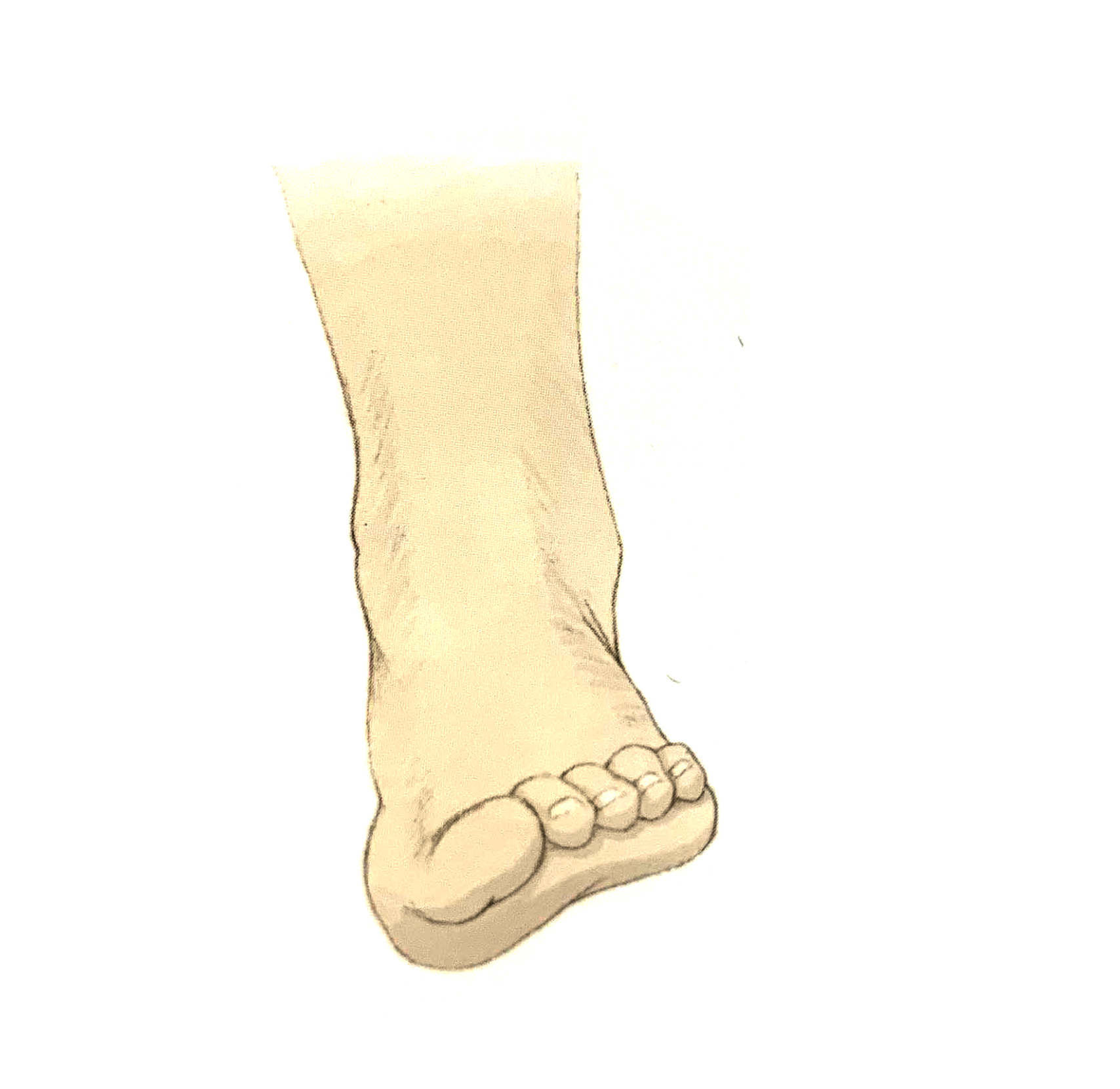Anatomy And Injuries Of The Foot And Ankle
Normal
Anatomy
Key: Abbreviations
- a. - Artery
- br. - Branch
- l. - Ligament
- m. - Muscle
- n. - Nerve
- t. - Tendon
- aa. - Arteries
- brr. - Branches
- li. - Ligaments
- mm. - Muscles
- nn. - Nerves


Nerve and Blood Supply
Key: Abbreviations
- Superficial peroneal n.
- Deep peroneal n.
- Intermediate dorsal cutaneous n.
- Medial dorsal cutaneous n.
- Anterior tibial a.
- Perforating br. of peroneal a.
- Lateral malleolar a.
- Lateral malleolar network
- Lateral calcaneal brr. of sural n.
- Lateral br. of deep peroneal n.
- Lateral tarsal a.
- Arcuate a.
- Lateral dorsal cutaneous br. of sural n.
- Dorsal digital brr. of superficial peroneal n.
- Dorsal digital brr. of deep peroneal n.
- Dorsal digital aa.
- Anterior perforating aa.
- Deep plantar a.
- Posterior perforating aa.
- Medial br. of deep peroneal n.
- Medial tarsal aa.
- Dorsalis pedis a.
- Posterior tibial a. & n.
- Calcaneal br. of posterior tibial a.
- Medial malleolar a.
- Lateral plantar a. & n.
- Medial plantar a. & n.
- Medial calcaneal brr. of sural n.
- Deep plantar arch
- Superficial br. of lateral plantar n.
- Plantar metatarsal aa.
- Common plantar digital nn.
- Plantar digital brr. of lateral plantar n.
- Plantar digital brr. of medial plantar n.
- Proper plantar digital aa.
- Superficial brr. of medial plantar a. & n.


Foot Injuries


Forefoot Injuries
- 1. BUNION - The misalignment of the bones of the big toe (first metatarsal and sesamoid bones) is often caused by ill-fitting shoes. Symptoms include a bulge on the inside of the foot with pain, redness, and swelling.
- 2. MORTON'S NEUROMA - A neuroma is a noncancerous thickening of nerve tissue; this type occurs in a nerve between the third and fourth toes. It causes sharp and burning pain in the ball of the foot and toes and sometimes numbness. it is often caused by ill-fitting shoes.
- 3. BUNIONETTE (Tailor's bunion) - Similar to a bunsion, but this involves the little toe
- 4. HAMMERTOE - A permanent sideways bend in a middle toe joint. Aggravation by tight shoes results in pain over the prominent bony areas of the toe. A hard corn may develop over this prominence as well.
Midfoot Injuries
- 5. JONES' FRACTURE - A fracture of the base of the little toe (fifth metatarsal bone). People often experience pain and swelling over the middle/outside area of the midportion of the foot.
- 6. CHOPART AVULSION FRACTURE - An ankle-twisting injury that may tear the tendon attached to the navicular bone and pull a small piece of the bone away.
- 7. LISFRANC DISLOCATION - This is a relatively rare condition that is often misdiagnosed. A twisting fall can dislodge the second bone from the first because the first and second metatarsal bones are not held together well.
- 8. METATARSAL STRESS FRACTURE - A common cause of foot pain when people suddently increase their activities (e.g. taking up jogging). Excessive stress on the ball of the foot can cause this hairline break resulting in pain and swelling.
Hindfoot Injuries
- 9. ACHILLES' TENDON RUPTURE - Often a sports-related injury for those who suddenly take up activity or are active only on the weekends. A "pop" is often felt in the posterior ankle, with edema (swelling) and pain.
- 10. TARSAL TUNNEL SYNDROME - Most commonly, the entrapment of the tibial nerve by the flexor retinaculum. Pain and stiffness occur over this area on the inside part of the ankle.
- 11. CALCANEAL FRACTURE - A break in the "heel bone" commonly caused by a high fall (e.g. it is becoming more common amongst snowboarders).
- 12. PLANTAR FASCITIS WITH HEEL SPUR - The most common cause of heel pain is inflammation of the connective tissue on the sole of the foot (plantar fascia). It is often associated with a bony protrusion known as a heel spur.
Sprains and Fractures
Key:
- A - Tibial plafond
- B - Malleolar
- C - Osteochondral fracture of the talar dome
- D - Jones' Fracture
- E - Metatarsal stress fracture
- F - Maisonneuve
- * There are two sites of fracture in this type.
Common Sprain Sites

Common Fracture Sites

Impingement
Anterior Impingement Syndrome
Impingement injuries often occur secondarily to traumatic injuries ( such as sprains), infections, or degenerative disease states. A tendency toward this type of malady is also inherited.

Dorsiflexed Ankle Causing Impingement
Repeated impact between the anterior tibia and dorsal tarsal bone can cause the formation of the osteophytes, or bone spurs. This is a painful condition that causes joint stiffness and immobility.

Movement About The Ankle
Inversion
An inward Rotation of the ankle joint. Severe or sudden inversion can cause sprains of ligaments and fractures of the foot bones. For example: Jones' fracture, Chopart avulsion fracture, tears of the anterior talofibular or calcaneofibular ligament.

Eversion
An outward rotation of the ankle joint. Severe or sudden eversion can cause sprains of the foot ligaments. For example: Deltoid ligament tears.

Dorsiflexion
Upward flexion of the ankle joint. Constant repetition of this movement can cause injury. For example: Soccer players may develop dorsal ankle impingement (see above) from repetitive kicking motions.

Plantar Flexion
Downward flexion of the ankle joint. Constant repetition of this movement can cause injury. For example: Ballet dancers can acquire posterior ankle impingement syndrome (see above) from being "on point" too often.
